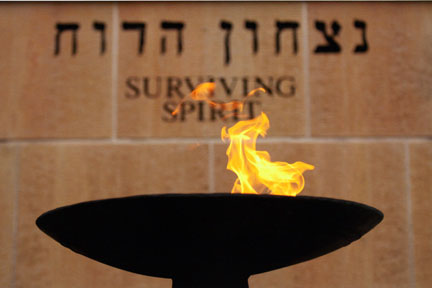
Last summer I had the chance to visit Hiroshima for the first time. I had long wanted to visit there, but now—as a Japanese student attending college in the United States—I felt an obligation.
I was amazed by the mountain ranges surrounding the city, the beautifully colored trees proof of the ecological recovery from World War II. As a biology major, I wanted to hike into the mountains nearer the city to see what else lived there. I asked a friend who has worked as a tour guide in Hiroshima to climb with me up Mount Eba.
As I walked in the forest, I saw many maple trees, some flower species I could not name, herbivores feeding on plants, and a male bush warbler singing to attract females. It was just the usual stuff—nothing special.
But something was different in this place.
As we walked deeper into the woods, I kept thinking about what I had read—that this area has the highest species abundance and rate of reproduction of all ecological communities in Japan. Everything seemed to have some strength. This became clearer when I saw a grasshopper gazing at me from a stump. At first it appeared to be the typical grasshopper that I used to try to catch as a child. Except for one thing: Its skin was much darker and thicker.
My friend said it was the same species of grasshopper seen elsewhere in the world, but that grasshoppers in Hiroshima are black, with a thicker exoskeleton, as a result of adapting to environmental changes after August 6, 1945.
This was it—the difference I’d felt about this ecological community. The “something” that makes these organisms unique in all the world.
Brave.
Only a few organisms survived after the immediate and long-term impacts of the disaster that took everything else away. Somehow the ancestors of these creatures adapted and increased their population with no artificial assistance.
As the black grasshopper gazed at me from the stump, I felt my weakness, ignorance, and cowardice. I felt how powerless we are in the presence of nature. I felt the black grasshopper was trying to give me some message, but I was too afraid to interpret it. Just a small grasshopper, it had something we did not have, do not have, and never will have.
When my friend and I reached the top of the mountain, I looked down on the city of Hiroshima. I imagined the people who suffered from pain; I imagined people mourning for loved ones; I imagined plants melting; I imagined animals escaping from the fire.
But everything seemed to be normal, functioning properly, full of peace.
I saw graveyards in front of the Atomic Bomb Dome, and in the distance there were only white clouds in a blue sky.
“Black Grasshopper” is an edited excerpt from Showcase, a collection of essays from Professor Tom Campbell’s creative nonfiction course.
 Last summer I had the chance to visit Hiroshima for the first time. I had long wanted to visit there, but now—as a Japanese student attending college in the United States—I felt an obligation.
Last summer I had the chance to visit Hiroshima for the first time. I had long wanted to visit there, but now—as a Japanese student attending college in the United States—I felt an obligation.